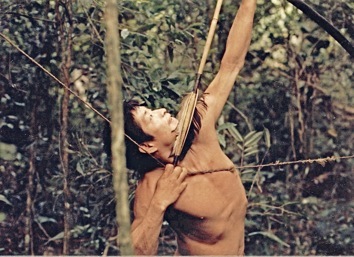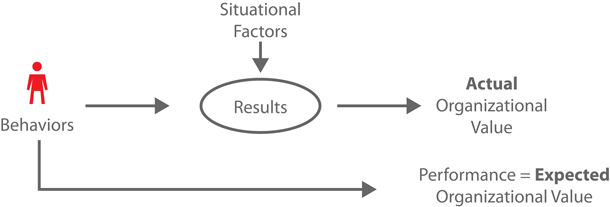I am frequently asked about the optimal size for a team. Like many leadership and team issues the answer is “it depends.” We can, however, look at some of the parameters regarding team size and gain a bit more awareness of the pertinent issues which will help us to develop higher performing teams.

For starters, let’s look at the earliest teams—foraging or raiding parties. Anthropologists have studied primitive tribes with an understanding that their behavior is most likely indicative of Paleolithic, that is pre-agricultural human behavior, and therefore a natural or instinctive team size.
The Dani tribes of western New Guinea gather hunting and raiding parties of 12-50 people whereas the Aché in Paraguay forage in groups of 6-42, with an average of 18. Other anthropologists have recorded local groups of about 25 people, although the group size may be limited by the availability of nearby food. On a larger scale, it is felt that full tribes, alliances, or coalitions consisted of approximately 500 individuals. To me, this feels like the largest size group one can have an immediate influence on.
Based upon research on team size, I feel that four major factors are in play:
- Focus
- Process losses
- Communication
- Diversity of viewpoints, knowledge, skills, and abilities
Small teams are able to focus well on very specific tasks. As the team’s scope or goals increase in number the team may need to increase in size. A small team requires very little infrastructure, communicates easily, is generally very flexible, and can adapt to new information quickly.
A larger team requires more structured processes, creating what we call process losses, taking time away from task work. All teams must find a comfortable balance between time spent on tasks and time spent on processes.
Think of communication channels as the wiring or nervous system for the team. As team size increases these channels and processes must be formalized to ensure all team members have access to information. Many tools are available today for the storage and sharing of team documents.
Diversity is an important factor, especially in groups requiring innovation. I’m not talking about gender and cultural diversity here, but more importantly diversity of viewpoints, knowledge, skills, and abilities (KSAs). At one extreme, if everyone on the team has the same KSAs, then there is no need for a team except to add more bodies to complete the same task. At the other extreme, if the KSAs and viewpoints of the team members are so radically different they may be unable to communicate and understand each other’s ideas. A balance is important here. A team should be composed of individuals who each bring some unique value to the table that may enhance or build upon others’ ideas. Some studies have shown that larger groups will generate more ideas in creative settings although there will certainly be a point at which diminishing returns begin.
As you build your team, as always, begin with your goals and determine the knowledge, skills, and abilities you will need. Then make an estimate of the number of people the tasks will require and where the people will be located. This will determine the types of communication channels you will need to put into place. Determine the stages of your project and the processes you will need, and how much time you wish to devote to agreeing on and creating the processes. Don’t be afraid to re-evaluate these decisions along the way and make adjustments as appropriate.
Concepts:
- Natural team size ranges from about six to 50
- Small teams are likely required to focus on very specific tasks
- Determine the knowledge, skills, and abilities required, and then the number of team members
- Allow the team to create the communication channels they feel are needed
- Become aware of the amount of time spent on team processes vs. task and adjust as appropriate
Keywords: leadership, I/O psychology, industrial and organizational psychology, team size, team diversity, communication, process
References:
- Bales, R. F. (1953). The equilibrium process in small groups. In T. Parson, R. F. Bales, & E. A. Shils (Eds.), Working Papers in the Theory of Action (pp. 111-161). Glencoe, IL: Free Press.
- Birdsell, J. B. (1968). Some predictions for the Pleistocene based on equilibrium systems among recent hunter-gatherers. In R. B. Lee & I. DeVore (Eds.), Man the Hunter. New York: Aldine.
- Dennis, A. R., & Wixom, B. H. (2002). Investigating the Moderators of the Group Support Systems Use with Meta-Analysis. Journal of Management Information Systems, 18(3), 235–257.
- Gallupe, R. B., Dennis, A. R., Cooper, W. H., Valacich, J. S., Bastianutti, L. M., & Nunamaker, J. F., Jr. (1992). Electronic brainstorming and group size. Academy of Management Journal, 35(2), 350-369.
- Heider, K. G. (1970). The Dugum Dani. New York: Wenner-Gren Foundation for Anthropological Research.
- Hill, K., Hawkes, K., Hurtado, A. M., & Kaplan, H. (1984). Seasonal variance in the diet of Ache hunter-gatherers in eastern Paraguay. Human Ecology, 12(2), 101-135.
- HĂĽlsheger, U. R., Anderson, N., & Salgado, J. F. (2009). Team-level predictors of innovation at work: A comprehensive meta-analysis spanning three decades of research. Journal of Applied Pscyhology, 94(5), 1128-1145.


